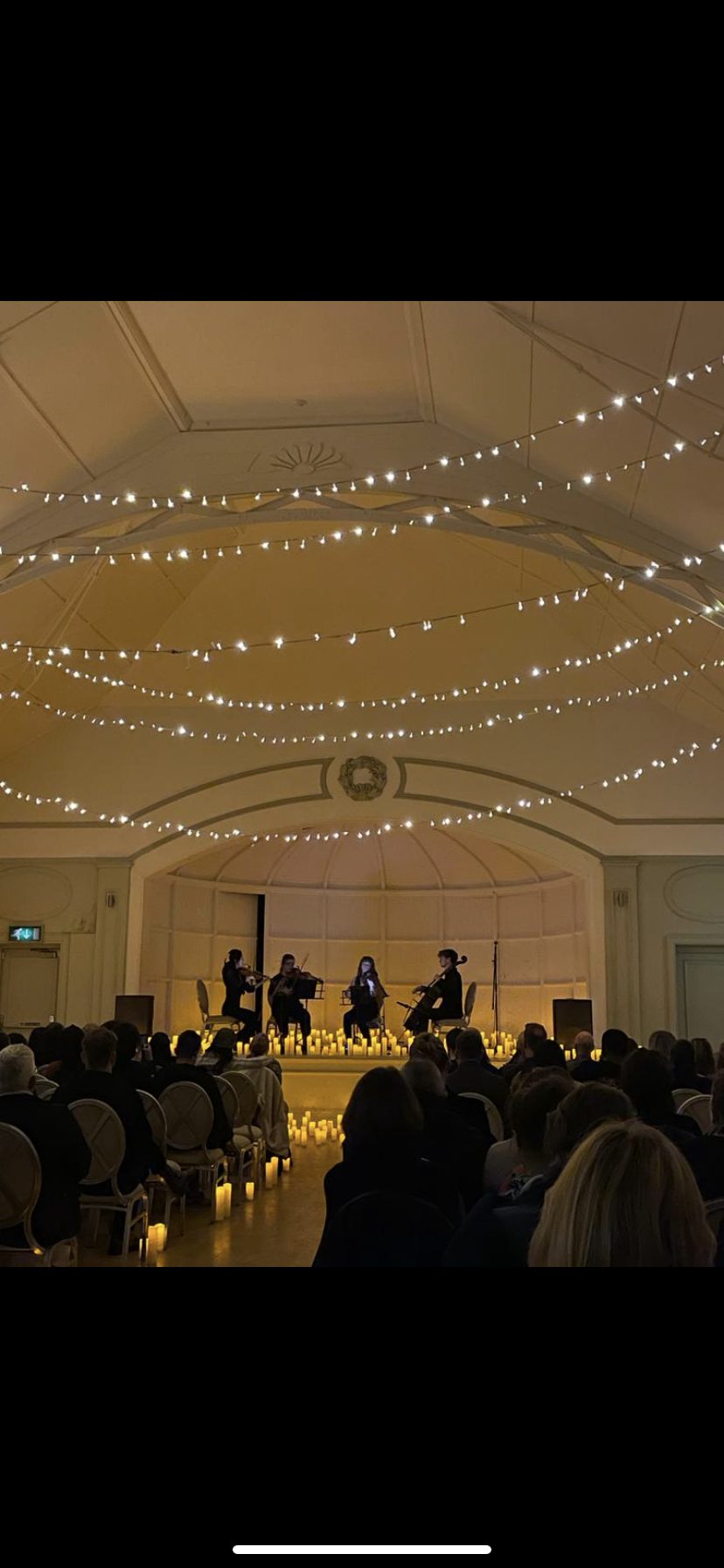
Food&Drink Editor Ashley Kabue attends the Candlelight concert of Vivaldi at the Botanical Gardens and finds the show to be an exquisite showing of classical music
Fever’s famous Candlelight concerts certainly lived up to my expectations. I attended ‘Vivaldi at the Birmingham Botanical Gardens’, and found that the combination of skilled performers and an exquisitely decorated venue resulted in a night I will not soon forget.
Before the performance, guests were free to browse indoor sections of the Botanical Gardens, lit with calming purple lights. Strolling slowly through these rooms lead to the performance hall, which was elegantly decorated with soft candlelight and streaming fairy-lights. Soothing classical music played from speakers as guests streamed in slowly, sipping drinks and talking in low voices. As we arrived early, we had an excellent view – we decided to sit closer to the back, as there was an elevated platform that meant we did not have to look through people’s heads to see the performance.
The Sekine Quartet performed that evening – a Birmingham-based string quartet formed by former Birmingham Conservatoire students. Performing that evening were Risa Sekina as first violin, Paola Cardarelli as second violin, Emily Dore on the viola, and Charlie Woodhouze on the cello. Dore briefly introduced the works of Antonio Lucio Vivaldi, who composed the Four Seasons in 1720 during the height of the Baroque Era. She began by explaining the structure of the performance that was to follow; divided into the four seasons, or concertos, beginning with Spring and ending with Winter. Each concerto would then be performed in three movements.
She also explained the distinct personality of each movement by reading aloud the descriptive sonnets that Vivaldi composed to run alongside his music. As I am not a classical music buff, I found that hearing the sonnets gave vital context that helped me understand the different tones of the seasons – I therefore, will occasionally include a line or two of Vivaldi’s sonnets, to aid in my description of the different emotions conveyed through their performance.
…hearing the sonnets gave vital context that helped me understand the different tones of the seasons
They began with Bach’s ‘Violin Concerto in A Minor’, a pleasant taster for what was to come. However, the real excitement began when the Sekine Quartet heralded the arrival of Spring – this concerto is the most well-known of Vivaldi’s works. You have certainly heard it for yourself – if not in movies like Pretty Woman (1990) or the Fantastic Four (2015), then in a television advertisement or a phone ringtone. The quartet began with a burst of energy, with the delicate trills of ‘birds’ that ‘celebrate [Springtime’s] return with festive song’. The quartet performed with a vitality and levity that perfectly represented the joy of spring that Vivaldi described. The performance then slowed to demonstrate Vivaldi’s sleeping shepherd in a ‘flower-strewn meadow’, and the acoustics of the hall reflected the wonderfully controlled dynamics of their performance.
The quartet performed with a vitality and levity that perfectly represented the joy of spring that Vivaldi described
The Summer season really surprised me – instead of another joyous performance, we were met with the force of the oppressive sun’s rays and terrifying storms. The force with which they played changed the tone from peaceful to intimidating – I could feel the trepidation of the shepherd, fearful of ‘lightning’s flash’ and scared of the ‘threatening north wind’. The first violinist Risa Sekine’s performance here was particularly enthralling; she seemed at one with her instrument, as she passionately swayed in her seat. The notes were consistently played sharply and clearly during what appeared to be an extremely technical piece – it was certainly impressive.
The notes were consistently played sharply and clearly during what appeared to be an extremely technical piece – it was certainly impressive
Whilst merry Autumn had its own charm, it was not as charismatic as the other seasons – due in no part to the performance of the quartet, who nonetheless played it with great skill. They portrayed particularly well the sleepiness and fatigue of hunters after a day of drinking and merriment. Winter was absolutely thrilling, with rises and falls, and crescendos that left me on the edge of my seat. The plucking of strings to demonstrate treading the ‘icy path slowly and cautiously, for fear of tripping and falling’ was done masterfully, and was a pleasant change to the ears after almost an hour of music. The performance ended with a final song, Ennio Morocone’s ‘Gabriel’s Oboe’, and then the night was over.
All four of the members of the quartet played delightfully. It is important to note that as a quartet, they did not have the accompaniment of other instruments in an orchestra. Therefore, the skill of Woodhouze the celloist in sustaining the performance must not go acknowledged. Overall, I would definitely recommend booking a ticket to another Candelight Performance in Birmingham. The tickets in the cheapest section were reasonably affordable at £20 each, and it was a lovely night out. Go find out for yourself!
Rating: 5/5
Enjoyed this? Read more from Redbrick Culture here!
Ballet Review: Birmingham Royal Ballet’s On Your Marks!
A Night At The Community Iftar
Comments